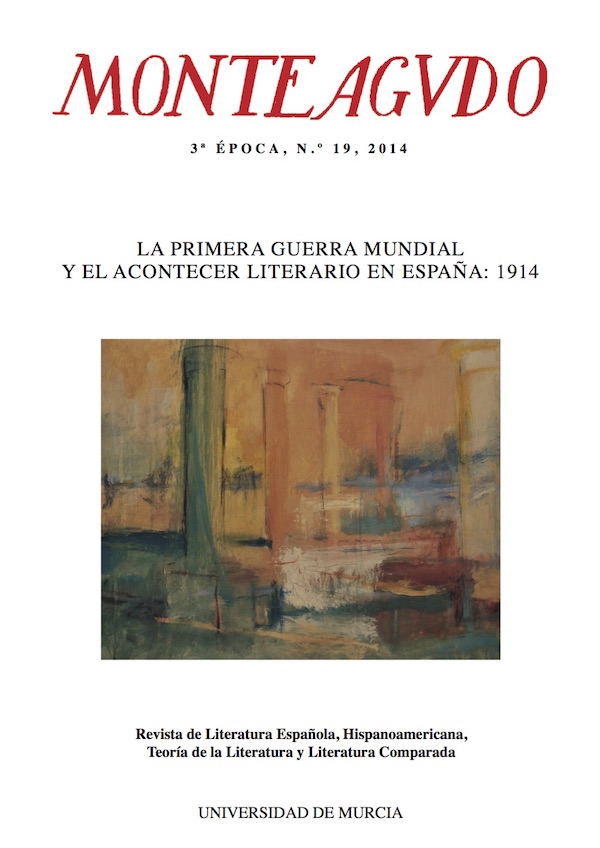La literatura y la Gran Guerra: Siegfried Sassoon y las trincheras
Abstract
This article deals with two works by the English writer Siegfried Sassoon (1886-1967), a poem (Trench Duty) and one of his novels of autobiographical foundation (Memoirs of an Infantry Officer), within the literature on the World War I. Our aim is to display the main devices by means of which both works represent war and its effect on the writer as the subject of writing. Perspectives and tools of interdiscursive analysis are used in order to detect the key lexical-semantic constructions in the studied Sassoon’s texts. Dawn and sunset as well as night and day constitute a circular time set in frontline life centered on the trench and viewed from it. The discursive role of the trench is explained as that of a place protected from external danger, despite the inherent risks of the battle. A dialectical relation between the inner space and the outer one is charted as the interdiscursive main feature from the position of the subject in the trench (the cellar and the dug-out as well) on the opposite side to unguarded situations. Trench plays in this way a constructive interdiscursive function in both the poem and the novel by Sassoon from an antibellicist perspective.Downloads
Download data is not yet available.
Metrics
Views/Downloads
-
Abstract581
-
PDF (Español (España))475
15-05-2015
Albaladejo, T., & Amezcua Gómez, D. (2015). La literatura y la Gran Guerra: Siegfried Sassoon y las trincheras. Monteagudo. Revista De Literatura Española, Hispanoamericana Y Teoría De La Literatura, (19), 21–37. Retrieved from https://revistas.um.es/monteagudo/article/view/227121
Artículos
The works published in this journal are subject to the following terms:
- The Publications Service of the University of Murcia (the publisher) retains the property rights (copyright) of the published works, and encourages and allows their reuse under the license of use indicated in point 2.
© Publications Service, University of Murcia, 2011
- The works are published in the electronic edition of the journal under a Creative Commons Attribution-NonCommercial-NoDerivatives 3.0 Spain license (legal text). They may be copied, used, distributed, transmitted and publicly displayed, provided that: i) the authorship and the original source of their publication (journal, publisher and URL of the work) are cited; ii) they are not used for commercial purposes; iii) the existence and specifications of this license of use are mentioned.







